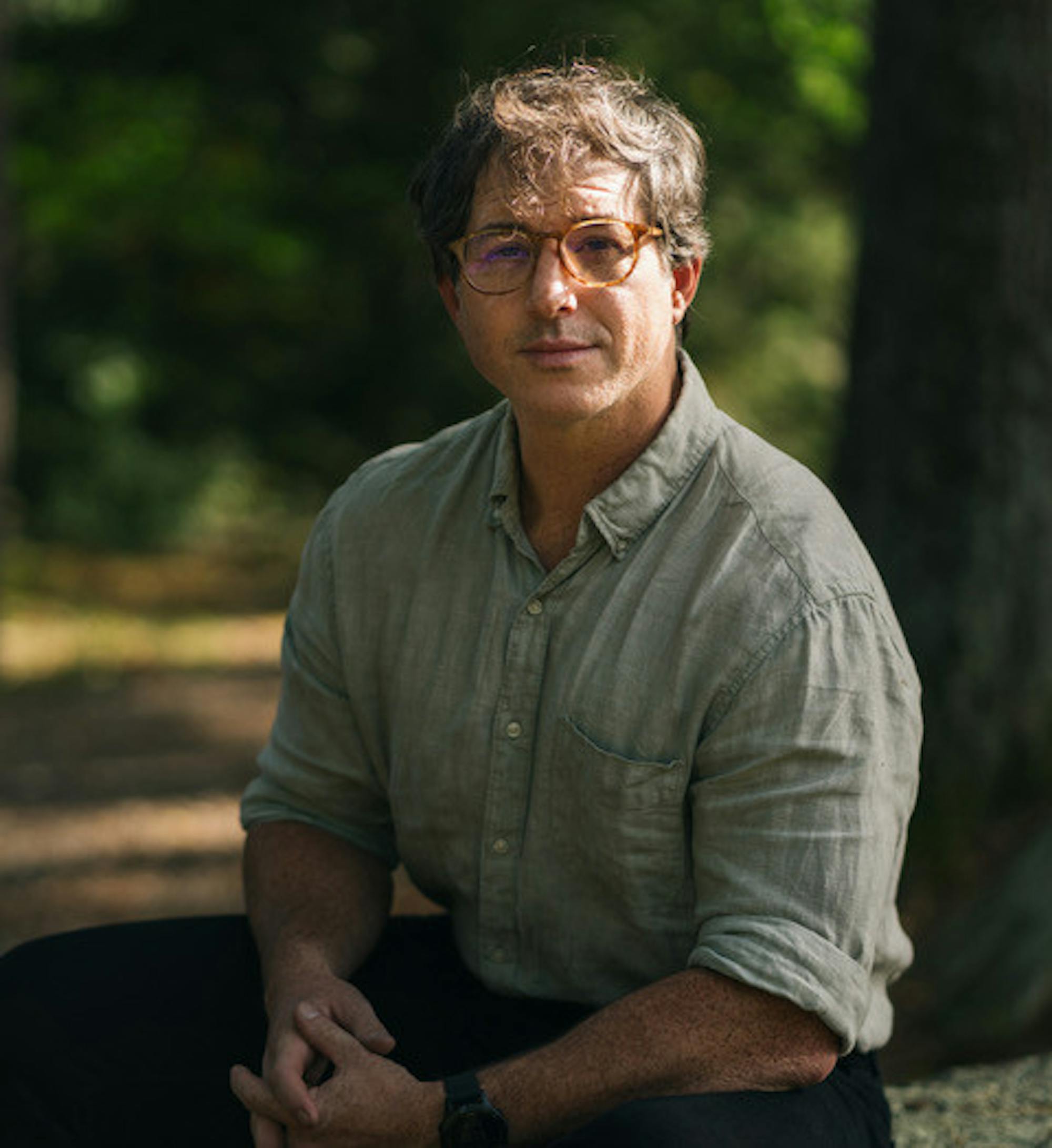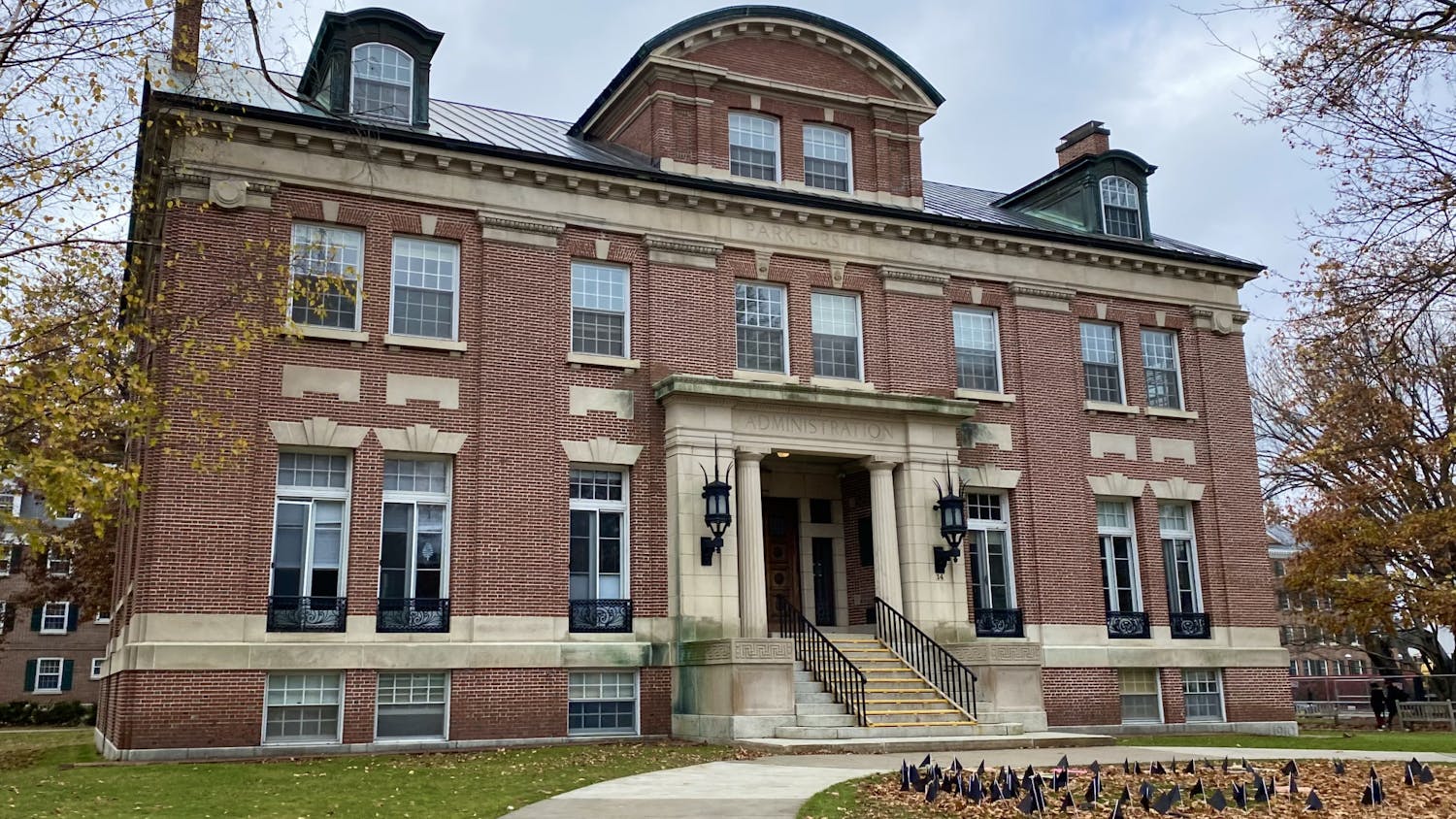After a career as an intelligence officer in Afghanistan, Justin Mankin began studying climate science and eventually joined the geography department at Dartmouth. Now a professor and doctor, Mankin leads the Dartmouth Climate Modeling and Impacts Group. The group’s research centers on understanding how climate change affects both people and ecosystems. He published a study, titled “National-scale attribution of historical climate damages,” which studied how climate damages, such as emissions, could be attributed to specific countries. This research was discussed at a 2022 United Nations conference, and informed the creation of a loss and damage fund that provides financial assistance to low-income countries to rebuild infrastructure after climate crises.The Dartmouth sat down with Professor Mankin to discuss his research and opinions on the future of climate science.
How did you get interested in climate research? What experiences provoked your interest in the subject?
JM: I was originally interested in climate research after winding down my previous career doing intelligence work for the U.S. government in Afghanistan after college. I was writing a master’s thesis on opium poppy farming in Afghanistan and its role in development as a way to understand the role of drug money being funneled to the insurgency. Trying to understand the role that snowpack and its change from year to year would affect cultivation choices is what first led me down the road of looking at the environment.
In my PhD, I was planning to do a dissertation on examining the extent to which variations in snow, its accumulation, and melt, shape resources for insurgency in a place like Afghanistan. I was trying to trace this larger narrative that was quite in vogue at the time that I entered grad school, which is that climate change causes conflict. This narrative is really compelling, but when you actually look for the mechanism by which climate selects for conflict in one place, but not the other, it really becomes elusive. I ended up not doing fieldwork and became more of a pure modeler. My PhD examined snow at much larger scales rather than just at the scale of Afghanistan and thought about the water security implications of snow loss. That’s what started my climate science career.
In the paper you published with Chris Callahan, “National-scale attribution of historical climate damages,” how did you go about attributing damages from climate change to certain nations, and how did you feel after publishing the piece?
JM: This idea of climate attribution is something I had been working on for a long time. Chris Callahan, one of my graduate students who’s now a postdoc himself, had a deep interest in it. When Chris and I looked at the literature of climate attribution, there had been work that thought about, ‘Okay, is climate change culpable for this extreme heat event? Or this tropical cyclone? Or this drought? Or this flood? What was the fraction of attributable risk?’ There had also been some work on the accountability side of climate science, like ‘Who’s doing the emitting?’ But there hadn’t been a whole lot of work that connected the full causal chain. We were interested in building that full end-to-end attribution.
What’s really cool about that paper is that it came out in the lead up to the Conference of Parties, or COP, in Egypt, which also happened to be the COP where questions of loss and damage were put on the agenda for the first time, in any meaningful way. A lot of the low income world had been fighting to get loss and damage, which is this idea that countries who are less culpable for climate change and tend to be lower income are also disproportionately impacted by climate change. These nations want rightful economic compensation, and there’s a bunch of different forms that compensation could take.
That was put on the agenda for the Egypt COP in 2022, and our paper had come out the summer beforehand. The power of it was that previously, a lot of the developed world hid behind the fact that everybody was emitting. What we were able to show is that you could see [a nation’s] income increase in a world where one emitter’s emissions were removed from the system. We showed that the idea that everyone’s emitting greenhouse gasses — and that therefore no individual could be blamed for climate change — is totally fallacious.
The establishment of the Monetary Fund to assist vulnerable countries was one of the main outcomes of COP 27. Do you feel like that step was enough?
JM: No. I feel like it was a huge win to even get loss and damage. However, coming out of the COP, I think it was disappointing … we need to think carefully about how to provide redress for past harms from climate change, while also managing and mitigating the risks of future climate change. My takeaway from the COP is that we weren’t able to do both. The focus on loss and damage came at the sacrifice of renewed commitments, or even deeper commitments to mitigating greenhouse gas emissions. Damage will continue to accrue and need to be compensated, as long as we’re continuing to warm the planet.
On the actual substance of the monetary facility, I think the details of it were pretty disheartening. This facility is not looking to compensate for past losses, it’s looking to provide funds for adaptations for the future. In the group, we look at climate change that’s occurred, and try to account for the losses so far. What we’re finding systematically is that these costs are higher than we understood in traditional economic models. If the costs of historical climate damages are far higher than we previously understood, any kind of facility that’s looking to fund adaptation, isn’t taking into account those deep costs.
How do you believe your research and role in climate science will continue to evolve as the climate crisis grows?
JM: Going forward, I want the group’s research to be informing the costs of inaction. I’m thinking deeply about the missing costs of climate change, owing to data poverty, with a graduate student of mine.. In low income countries, we have the least data to measure the impacts of climate change. Those missing data mean that we’re not as well positioned to devise intervention strategies in low income places as we would be in places where we have data, such as the high income world. A lot of our research is this idea of how the limits of the data and the data themselves are a reflection of the values of the data collector. I’m trying to build a portfolio of work that is thinking about this data poverty issue in the context of climate change. That’s where I see some of our work going.
You wrote an op-ed discussing the drought in the American West. You ended with a line that said, “an era of drought in the western United States has begun, our focus should be on adapting to this dry run, rather than hoping for it to end.” How do you think that the United States as a nation should grapple with the balance between realistic pessimism and optimistic hope, when it comes to the climate crisis?
JM: Firstly, the nature of the climate crisis is that it’s always worse tomorrow than it is today. The time to act is always now. There is increasing recognition that the impacts of climate change have manifested already, and they are a reality to which we need to adjust. I don’t think the notion of being fatalistic in the face of the climate crisis is something I can get behind. I wouldn’t be doing my job if I didn’t think that this problem was solvable.
This notion of hand-wringing and fatalism is as dangerous and problematic as climate denialism. I think there are two sides to the same coin, and that coin should be put to the side. The people who want to solve the crisis should get to work. That doesn’t mean that grievance shouldn’t be real, but what we do with the energy and emotion from that grievance is essential. I’m choosing to use our science to empower people in the face of this climate crisis because we have a tremendous amount of agency in shaping the nature of the climate crisis going forward.
How can Dartmouth continue to support your research?
JM: I want Dartmouth to be a place where climate solutions are conceived of and implemented. That means we want Dartmouth to be a place where the Big Green is truly green. It is essential that we are walking the walk, that our brand aligns with our values across teaching, academic research and campus life, from the kinds of facilities we have, the heating of our dorms and the composting of our foods. At Dartmouth, we are in an incredibly privileged and well resourced institution, and if we are not able to make this transition and be a model for others, who can? So I want to see this systematic alignment across all the elements of Dartmouth life around addressing climate change locally and being a beacon of that for places globally.
This interview has been edited for length and clarity.




